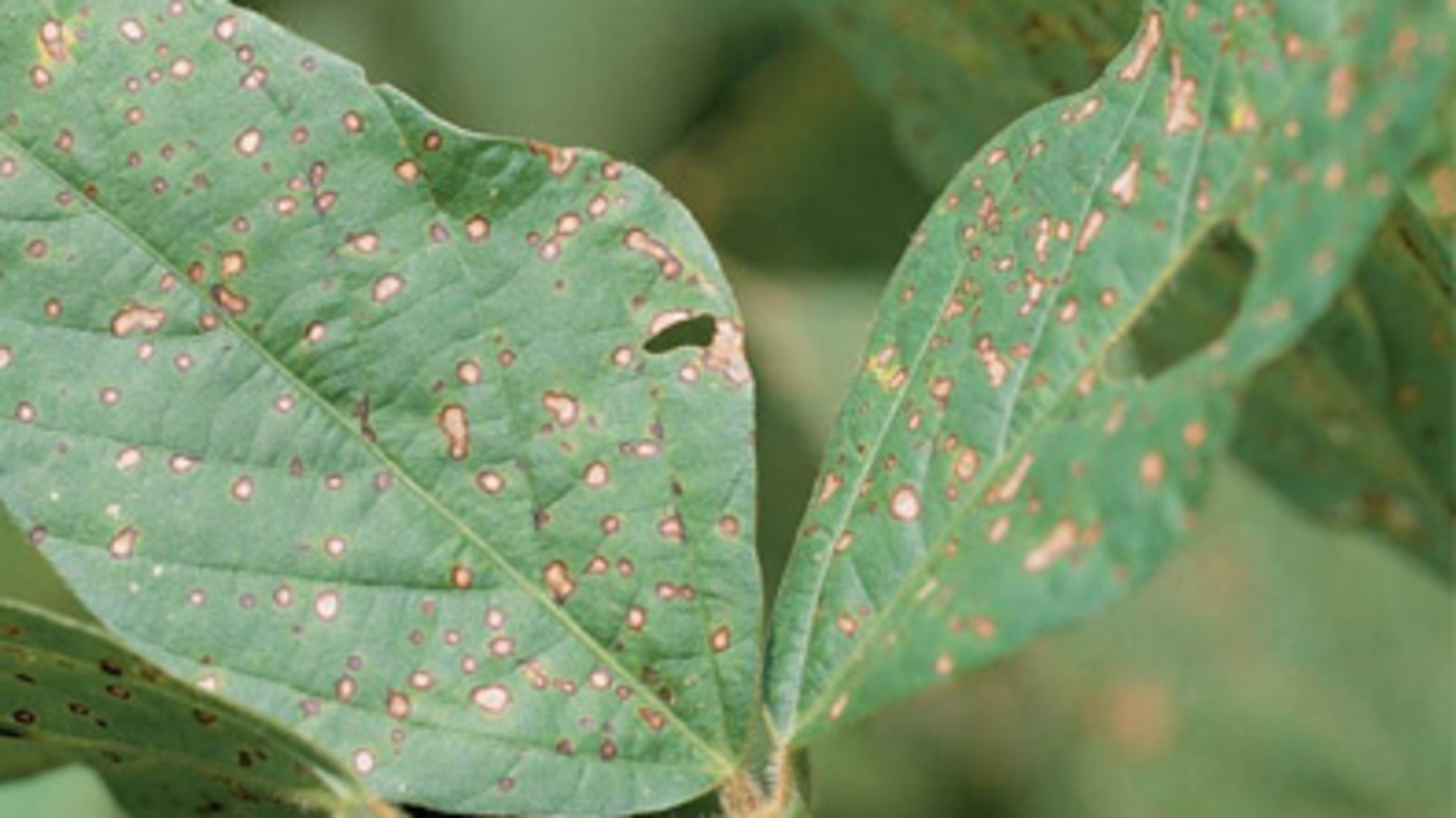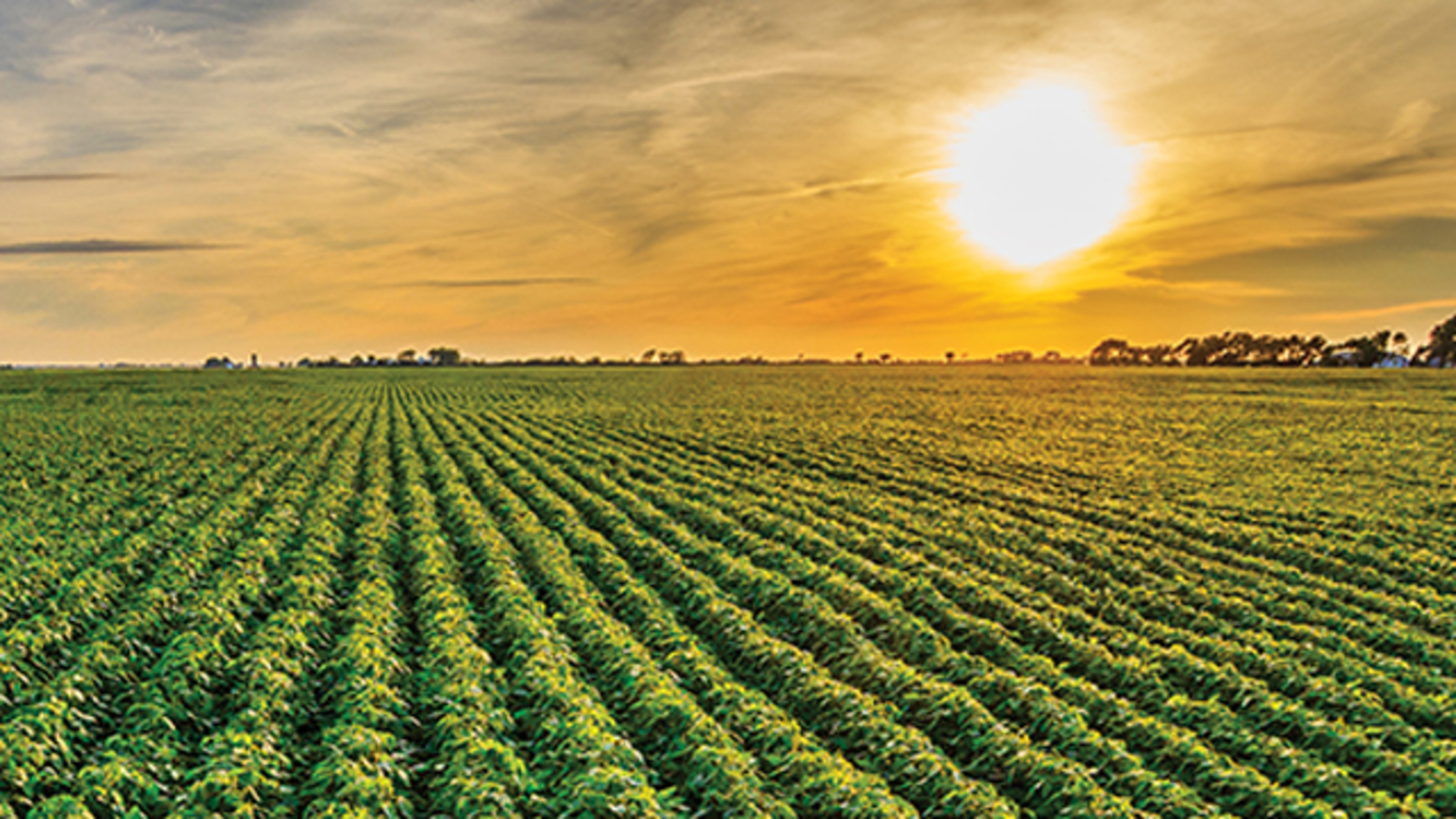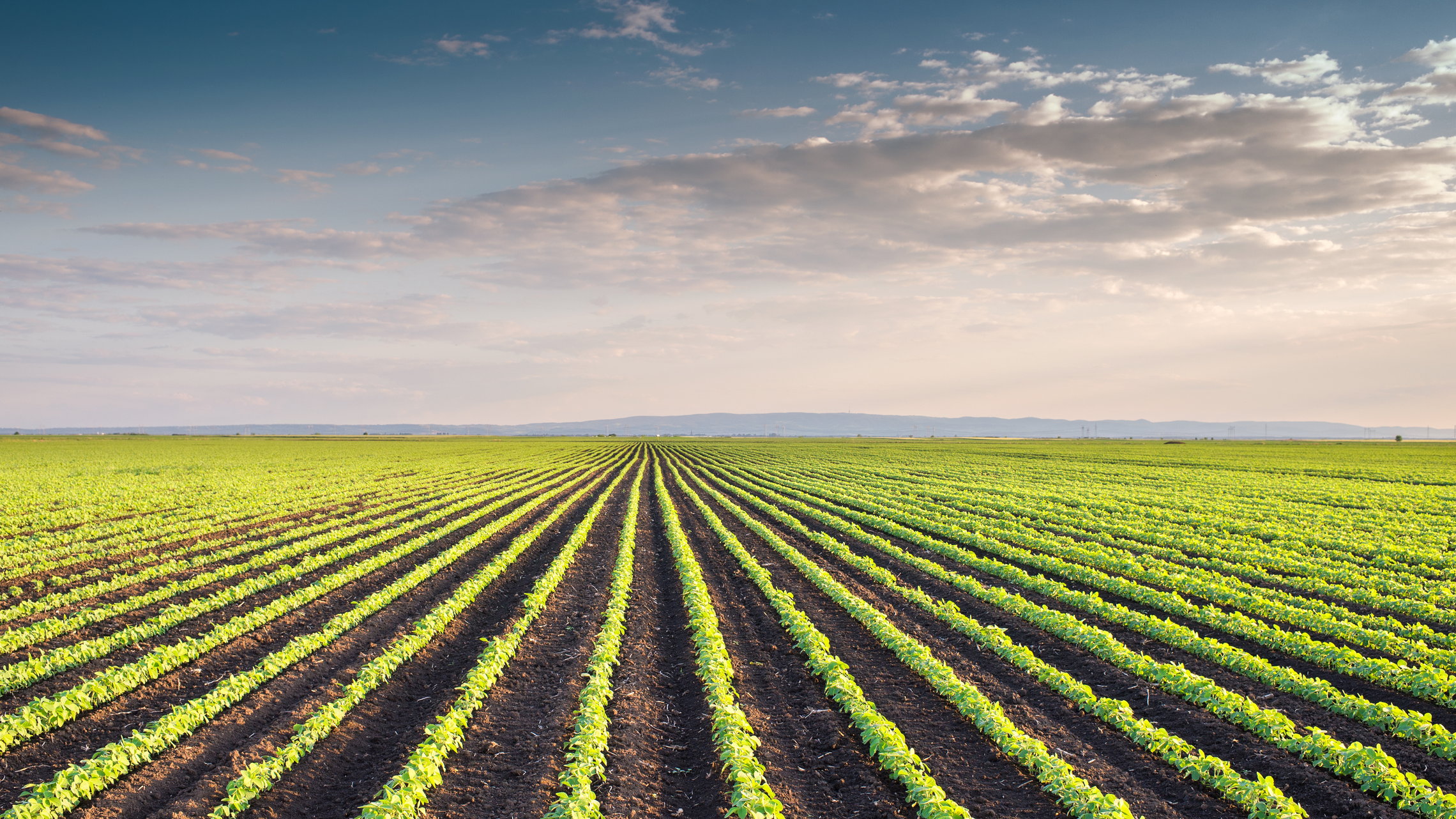Frogeye Leaf Spot in Soybeans

Frogeye leaf spot, caused by the fungus Cerospora sojina, is a common soybean foliar disease in the South. It’s a more recent disease in Midwestern states and has spread into the upper Midwest as well. Warmer winter temperatures, susceptible soybean germplasm and reduced tillage lead to more frequent outbreaks of Frogeye leaf spot. Plant pathologists recommend farmers prepare to defend against this potentially yield-robbing disease every year.
“We have millions of acres of the host soybean across the United States and consequently high levels inoculum because of minimum tillage and infested residue on soil surfaces,” says Dr. Alison Robertson, Extension field crops plant pathologist, Iowa State University. “You’re more at risk of Frogeye leaf spot in areas such as low-lying river bottoms and with long periods of leaf wetness due to high humidity and frequent precipitation.”
Risk of disease is also highest when soybeans are grown continuously in the same field, especially in reduced-tillage situations. The disease primarily thrives in infested crop residue and spreads via infected seed and airborne spores.
Identification and Life Cycle
Although infection may begin at any stage of soybean development, Frogeye leaf spot most often occurs after flowering. Typically, it’s seen in the upper canopy. Initial symptoms appear as small dark spots on the leaves. The spots are angular with light gray centers and distinct purple to red-brown margins. Individual leaf spots can merge to form larger patterns of Blight on the leaf. When the infection occurs, Frogeye leaf spot can cause premature Leaf drop.
The life cycle of Frogeye leaf spot begins when the fungus survives in crop residue or on seed in storage. Seed infection is a common means of proliferation for this disease. Infected seed, provides an avenue for long-distance spread of the fungus. When seed is infected, it germinates poorly and resulting seedlings are weak. Spores produced on the leaves of infected seedlings are the main source of the spread of Frogeye leaf spot. Spores become airborne and are dispersed by wind or splashed on nearby plants by rainfall.
The first noticeable leaf symptoms occur after soybean plants begin to bloom. The likelihood of infection and spread are greatest during warm, humid weather with cloudy days and frequent rain. Under these conditions, the Frogeye leaf spot fungus produces abundant spores, creating a cycle of leaf infection throughout the growing season. Extended wet weather exacerbates disease proliferation even more.
Stems and pods can also be affected, which poses another threat to yield. Stem infections appear later in the season as long, narrow, dark lesions with flat centers. If pod lesions occur, they will look circular to long in shape, reddish- brown in color and slightly sunken. As these lesions mature, centers will appear gray and brown. Infected seed symptoms are visible as gray and brown areas on the seed coat, which may crack and flake.
Crop Damage
Yield loss from Frogeye leaf spot disease results primarily from lack of photosynthesis caused by the leaf infection and premature defoliation. When seed is infected, it germinates poorly and resulting seedlings are weak. The disease is reported to cause soybean yield losses of 30 percent in some fields during wet years.
Managing Frogeye Leaf Spot
Farmers have several options to manage Frogeye leaf spot, including variety selection, scouting, cultural practices and fungicides. These best management practices also help minimize the potential for fungicide resistance. Following seasonal reports about disease occurrences from county Extension agronomists is another helpful practice.
Variety Selection
Avoid Frogeye leaf spot in soybeans by planting resistant seed. If the disease was detected in your crop last year, planting a resistant variety is an effective component of a sound management strategy.
Plant high-quality seed within a maturity group to fit your climate, and don’t skimp on seeding rates. Good genetics can add 10 to 12 bushels of yield per acre. Choose more than one variety to manage risk and potential yield.
Scouting
When scouting soybean fields for weeds and insects, check susceptible varieties for the presence of Frogeye leaf spot and other foliar diseases. Start looking for symptoms early in the season. Stunted seedlings with dark lesions of varying size is one of the first signs of Frogeye leaf spot. Begin looking for lesions at the R2 soybean growth stage as they tend to begin to appear after floral initiation. Typically, the disease will be spread throughout a field. If you suspect Frogeye leaf spot, take samples and send them to the diagnostic lab recommended by your county Extension agent.
Cultural Practices
Two-year rotations with other crops and cultivation of crop residues prior to planting can lower inoculum levels and reduce disease. Practices such as shredding or disking after harvest can also help.
Fungicides
Frogeye leaf spot is a serious disease that can cause 30 percent or greater yield loss if control measures are not taken. Research from multiple states shows that fungicide applications made between the R2 and R5 growth stage provide the best timing for economical control.
Fungicides belonging to Group 3 (triazoles) and Group 11 (strobilurins) chemistry classes are among the most frequently used to control Frogeye leaf spot. Farmers should be aware that resistance of Cerospora sojina to Group 11 fungicides has been reported in Arkansas, Kentucky, Illinois, Tennessee and Missouri. To reduce the chance of fungicide resistance, triazoles and strobilurins should be tankmixed or rotated with fungicides belonging to a different fungicide group labeled for Frogeye leaf spot, particularly if multiple fungicide applications are used.
BASF Solutions to Control Diseases in Soybeans
Disease-tolerant seed traits can be found in Credenz® soybean seed. Credenz can provide a degree of built-in protection against Frogeye leaf spot as well as Phytophthora root rot and Sudden Death Syndrome (SDS), plus multiple herbicide-tolerant traits and nematode control. When followed by timely fungicide applications, Credenz soybeans are best protected against yield-robbing diseases.
A fungicide seed treatment can provide a healthy start for seedlings. Multiple fungal pests can impact soybean seeds and seedlings immediately after planting. ILeVO® soybean seed treatment protects against the fungus causing SDS in soybeans, which can be exacerbated by cool or damp conditions early in the season.
Also, timely foliar fungicide applications help protect soybean plants from Frogeye leaf spot and other diseases through the season. For farmers, a fungicide decision is a matter of considering production needs, past history in the fields, commodity prices, proper timing and risk management.
To learn more about Frogeye Leaf Spot and how to manage it, reach out to a local BASF representative.
Before purchasing seed, selecting a seed treatment or applying any fungicide, please read the entire label for the best possible results and to confirm that the product is effective on the disease you need to control. Every product is not suitable for every situation, and correct application technique will ensure the best results.
Always read and follow label directions.
BASF Rep Finder
- Enter your zip code or city below in the search bar to find a BASF representative in your area.
- Select the city from the dropdown menu to find your rep.
- Use the zoom-in or zoom-out function on the map to refine your search results.


